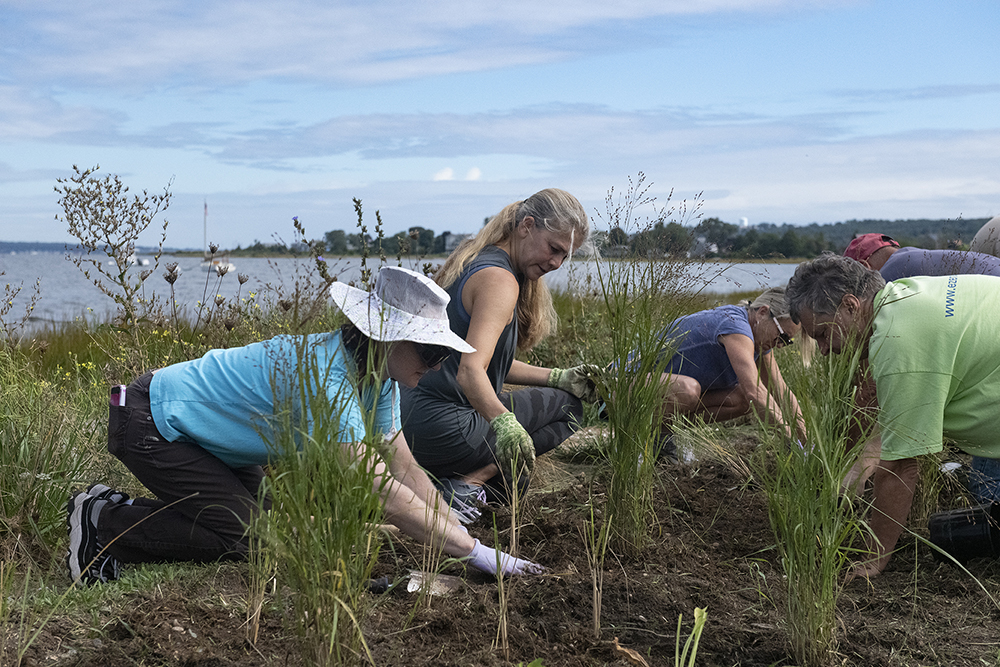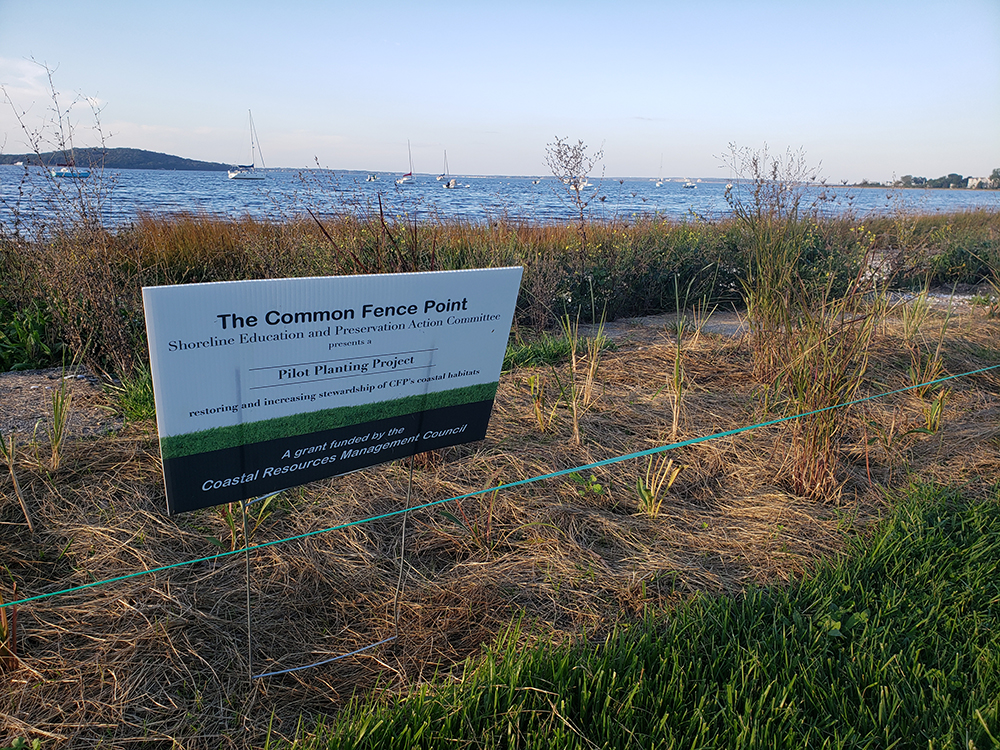Neighbors have rallied to help improve their Portsmouth community’s coastal resilience.

Wooden stakes appeared in the grass along the side of the road in Common Fence Point in Portsmouth, and several neighbors wondered, “What’s going on?”
The Common Fence Point Shoreline Education and Preservation Action Committee (SEPAC) installed the stakes, and that response was what they were hoping for. The stakes were the beginning of a planting project to reduce coastal erosion in this peninsula community of 700 households at the tip of Portsmouth. Making the project visible by installing the stakes two weeks before planting began gave neighbors time to ask, “What are you guys doing?” says Jeff Prater, Common Fence Point resident and member of the SEPAC. “I think that was an extremely positive thing to do, because we were able to then talk to those neighbors. And, you know, kind of allay their fears, educate them on what we’re doing and why.”

What they were doing was using grant money from the Coastal Resources Management Council to purchase native plants that could help reduce erosion from both the storm water runoff that would come down the street and from storm surge, particularly from Nor’easters, which wash a little more of the coastline into Narragansett Bay with each passing storm.
The project enlisted community volunteers to procure, dig, plant and maintain large swaths of vegetation between the road and the shoreline. What’s more, neighbors were consulted so that the plant choices could also be in keeping with their values for the area – low-growing plants were chosen, for instance, that would not block views of the water.
Jeff Prater, Common Fence Point resident, and Wenley Ferguson, habitat restoration director with Save The Bay, discuss plant selection for restoration project.
The erosion-control plantings are one project of three planned for Common Fence Point that will improve the area’s resilience to storms as well as reduce invasive phragmites and enhance native habitat. Guidance for the project was provided by Wenley Ferguson, habitat restoration director with Save The Bay; Pam Rubinoff, associate coastal manager with the University of Rhode Island’s Coastal Resources Center and Rhode Island Sea Grant; and Jen West, coastal training program coordinator with the Narragansett Bay National Estuarine Research Reserve.
Watch the full video below to learn more about the planting project and how it brought the community together.
The Common Fence Point Preparedness Committee (CFPPC), a volunteer group of neighbors, formed in July 2019 with the vision that Common Fence Point is prepared for and resilient to acute hazards such as flooding from intense storms and extreme tides as well as impacts of long-term climate change such as sea level rise.
Since the initial 2019 community forum to identify concerns, understand strengths and weaknesses, and identify priority actions, the community has met monthly to implement key actions that help them to be more prepared and resilient to storms and flooding.
